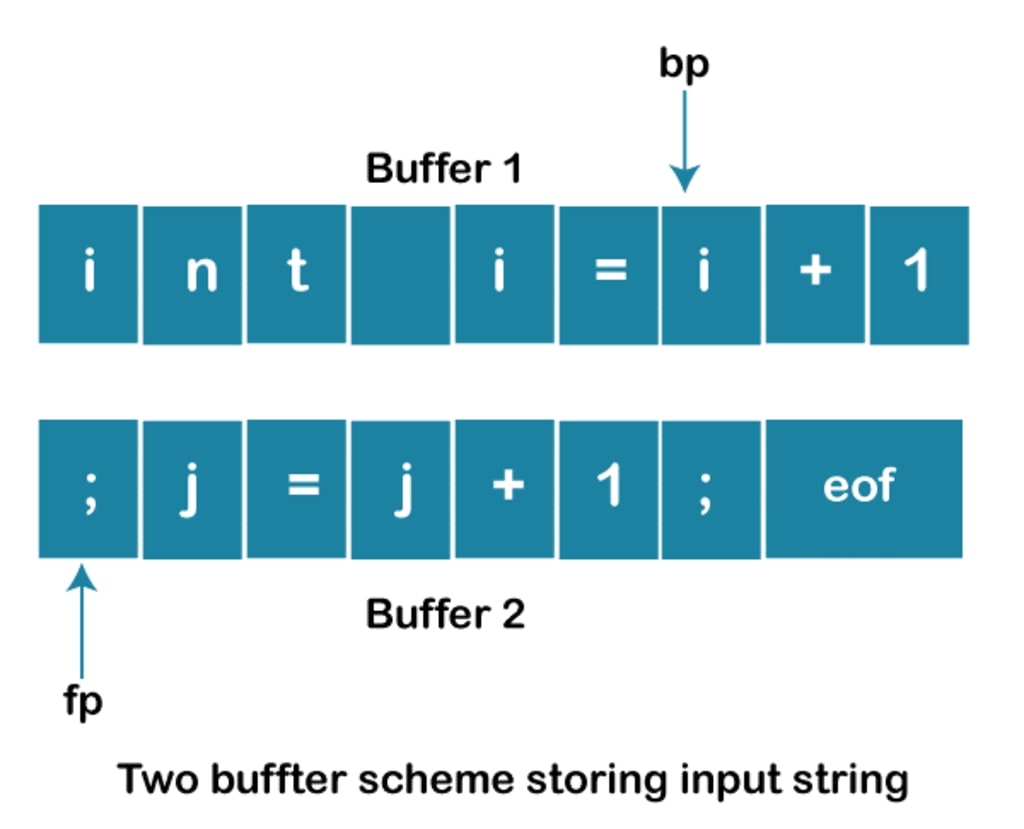Input Buffering in Compiler Design
Optimizing Lexical Analysis for Faster Compilation

Input Buffering in Compiler Design
Input buffering is an important technique in compiler design. It plays a significant role in the lexical analysis phase, which is the first phase of the compiler.
During lexical analysis, the source code is read character by character to identify tokens. Tokens are the smallest units of meaning, like keywords, identifiers, operators, and symbols.
Efficiently managing how the source code is read and processed is essential, and this is where input buffering comes into play.
What is Input Buffering?
Input buffering in compiler is a method used to increase the speed of reading of the source code by reducing the number of times the compiler needs to access the source file. Without input buffering, the compiler needs to read each character from the file one at a time, which is slow and time consuming.
Input buffering solves this problem by reading large blocks of characters into memory at once, thus least the number of input operations.
How Input Buffering Works
The basic idea of input buffering is to use a buffer, which is a block of memory where the source code is temporarily stored. There are typically two types of buffers used:
1. Single Buffer: A single large block of memory that holds part of the source code.
2. Double Buffer: Two blocks of memory, used alternately, to ensure that while one buffer is being processed, the other can be filled with new characters from the source file.
Single Buffer
In a single buffer system, the compiler reads a large block of the source file into a buffer. The lexical analyser then processes this buffer character by character to identify tokens.
When the buffer is exhausted, the next block of characters is read into the same buffer, and the process repeats. While simple, this method can be inefficient because the processing has to stop every time the buffer needs to be refilled.
Double Buffer
A more efficient approach is double buffering. In this system, there are two buffers. While the lexical analyser processes characters from one buffer, the other buffer can be filled with the next block of characters from the source file. This overlapping of processing and reading helps in maintaining a continuous flow of characters and reduces the waiting time.
Here's how double buffering works in detail:
- Buffer A and Buffer B are the two buffers.
- The compiler fills Buffer A with characters from the source file.
- The lexical analyser starts processing characters from Buffer A.
- When Buffer A is half-processed, the compiler starts filling Buffer B with the next set of characters.
- Once Buffer A is completely processed, the lexical analyser switches to Buffer B.
- This process continues, keeping the flow smooth and uninterrupted.
Sentinels in Input Buffering
To make the process of input buffering fast, sentinels can be used. Sentinels are special characters placed at the end of each buffer to signify the end. This eliminates the need for checking the buffer's end condition repeatedly, which can slow down the process.
Advantages of Input Buffering
1. Efficiency:
By reading large blocks of data at once, input buffering reduces the number of input operations, making the process faster.
2. Reduced Latency:
Double buffering ensures that while one buffer is being processed, the other is being filled, reducing waiting time and increasing the overall speed of the lexical analysis.
3. Smooth Processing:
The use of sentinels helps in seamless buffer transitions, avoiding constant end-of-buffer checks.
Conclusion
Input buffering is an essential component in compiler design, significantly enhancing the efficiency of the lexical analysis phase. By using the techniques like single and double buffering, compilers can read and process source code much faster.
This efficiency is important for the overall performance of the compiler, impacting how quickly and effectively programs can be compiled and executed.
About the Creator
Pushpendra Sharma
I am currently working as Digital Marketing Executive in Tutorials and Examples.
Enjoyed the story? Support the Creator.
Subscribe for free to receive all their stories in your feed. You could also pledge your support or give them a one-off tip, letting them know you appreciate their work.






Comments (1)
Hey, just wanna let you know that this is more suitable to be posted in the 01 community 😊